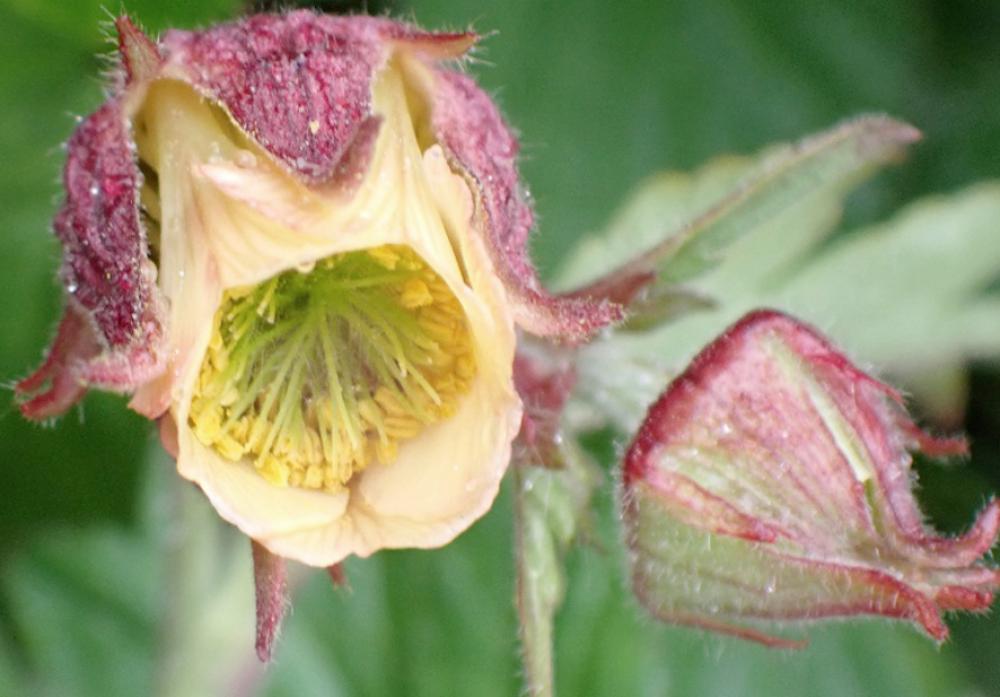
The Water Aven (Geum rivale) – Button, Granny bonnet and ‘Cure-all’
AT this time of year, large swathes of the water aven can be found growing in ditches, damper woodland rides and along the stream edges.
Their dark-red, drooping heads appear quite insignificant, some might say uninteresting, alongside the more gaudy bluebells and primroses.
However, take a closer look inside the flower. Deep purple sepals encircle a cup of orange-pink petals within which sit numerous stamens and a central cluster of ovaries.
To add to the complexity of the flower, an extra “purple ruff”called the epicalyx surrounds the sepals.
In my opinion, these beautiful flowers are reminiscent of the Tudor rose in both colour and shape, hardly surprising as water avens belong to the rose family.
Observe the long, green zig-zag styles projecting from the ovaries. The styles stiffen and develop into hooked bristles in the fruits, forming attractive seed heads – very useful for attaching to passing animals during seed dispersal.
Nectaries at the base of the flower attract the pollinating insects which encourages cross-pollination.
Bumble bees can circumvent the system by inserting their proboscis between the sepals and petals to steal the nectar.
Sometimes the water aven grows in proximity to its cousin, the wood aven (Geum urbanum).
Often the two will cross and form a hybrid G. x intermedium.
A whole spectrum of flowers can be found in the hybrid, ranging from the more upright yellow of the wood aven to the purple drooping flower of the water aven.
The genetics of these hybrid swarms are very interesting, only containing both parent species and the F1 cross.
It is thought that later generation hybrid crosses in the swarm are poorly adapted to the habitats and do not survive until adulthood.
The rose family is quite a large group containing a number of genera, superficially they can appear quite different but generally possess a number of the same features.
Look out in particular for the leaves arranged alternately along the stem and the numerous stamens and styles within the five-petalled flower.
Currently in bloom are the barren strawberry (Potentilla), wild cherry and blackthorn (both Prunus) alongside many of our domesticated apples (Malus) and pears (Pyrus).
Why not compare some of the flowers of these species with the water aven and see what they all have in common?
The Upper Teesdale Botany Group are now surveying the flora in upper Teesdale.
These outdoor sessions take place on Monday evenings. To attend a field survey both experienced botanists and beginners are welcome and should contact Dr Margaret Bradshaw on mebhilltop@btinternet.com.
Lizzie Maddison
Upper Teesdale Botany Group





